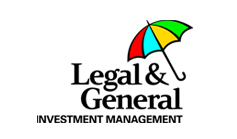
An imperative task for any CEO with aspirations to maintain a high performing business is achieving alignment across multiple layers of the stakeholder base. Alignment should start at executive and Board level, spread across the employee base and extend to the investing structure, be it private or public ownership.
Attendees at Criticaleye’s 2023 CEO Retreat, held in association with Cognizant and Eton Bridge Partners, discussed alignment as a fundamental prerequisite for high performance. The top job is often described as the loneliest in the business, so it is of upmost importance that an environment of familiarity and trust is developed with those working closest to the CEO.
Deborah Lee, Chief People Officer at FTSE 100 firm Compass Group, said: “The CEO needs to have someone that they trust, that they can talk any worries through. They can build that critical trust with the CPO, but only if they are on the same wavelength.
Deborah Lee, Chief People Officer at FTSE 100 firm Compass Group, said: “The CEO needs to have someone that they trust, that they can talk any worries through. They can build that critical trust with the CPO, but only if they are on the same wavelength.
“The CEO-CPO relationship isn’t the only important one; the CFO comes into it and the rest of the executive team. It's about being able to do your job but also being a business leader who can help the rest of the team to be successful. And that means really understanding the strategy, the direction, the challenges.”
This degree of support and alignment should naturally extend to the Board, with the Chair in particular undertaking a vital conduit role connecting the Board with the CEO.
Andrea Gisle Joosen, Chair of Sweden-based Bilprovningen and a Board Mentor at Criticaleye, said: “There has to be a good chemistry between the CEO and Chair. If both individuals are highly capable but there is a lack of chemistry between them, it's really going to be difficult to make any cooperation work.
“One of the most important things is that there's open and really transparent communication from both sides -- respectful and transparent. Because if you're not transparent, then it's really hard to build trust,” Andrea added.
There must also be an acknowledgement that there will be differences of opinion among the leadership team on certain topics, as alluded to by Criticaleye CEO Matthew Blagg: “The team has to be capable of critical challenge and critical debate both at Board level and then cascading down into the executive, because I think the important thing is collective responsibility.
“Yes, CEOs make decisions. At the end of the day, it’s an isolated role and it comes down to a very small number of big calls, but they have to carry people. And that means there has to be that interaction, that critical debate. And they have to be able to land things.”
The importance of alignment at the broader stakeholder level was also not lost on speakers at the Retreat. Jon Stanton, Group CEO at The Weir Group, described the recent process of redefining the FTSE 100 company’s purpose, in order to align with key stakeholders.
“We asked ourselves: ‘What is our purpose? Why are we here? What are we trying to do?’ We now have a very clear purpose and a strategy which has our people, culture and sustainability right at the heart of it.
“We have created a win-win proposition where we do the right things for our customers, for our people and the planet, but it's also a massive commercial opportunity as well. I think that's been critical in terms of driving engagement and alignment in the organisation,” Jon added.
A strong corporate purpose can also resonate with investors, who are another vital stakeholder group in any business. “Our long-term investors know that we really care about purpose and they care about what we're doing,” Jon said.
“They care that we're meeting the needs of all stakeholders, that we've got a good strategy, that we're looking after our people and our customers, that we’re driving alignment, and these are the institutions who buy our shares to hold them for many years, because they believe in the long-term journey that we're going on as a company.”
Keep Communicating
Keep Communicating
Frequent and open communication is a key part of keeping shareholders engaged with the overarching strategy, according to Andrea. “When you're a public company, you have to respect the Code, which restricts you to only discuss issues that are public knowledge, but there is still room to clarify things or explain more in depth.
“I think having that alignment at the shareholder level and checking in with them relatively frequently is really important to avoid unnecessary tensions, because this doesn't help the company and just takes time away from building your business,” she advised.
Ultimately, shareholders want to see financial returns so it can be challenging for companies to hit the right notes in terms of messaging around the long-term strategy. Matthew argued that simplicity is key to bear in mind when communicating with investors. “Generally, your shareholders want consistency and want to see you deliver results that you’ve promised. And they want simplification of story. Keep it simple, make sure you’re consistent and make sure you've got a strong CFO, where you're absolutely aligned and can work in unison, because if you get those components right, you're going to get the best outcomes for all stakeholders, including investors.”
While it is the CEO that is tasked with ultimate responsibility for the strategic direction and ongoing success of the business, it’s clear that a unified leadership team is fundamental in creating broader alignment through the various stakeholder levels. When all stakeholders move in lockstep, chances of long-term growth are significantly enhanced.
Jacob Ambrose Willson, Senior Editor, Criticaleye










 (002).png)













